The Story of Tanzanite Gemstones
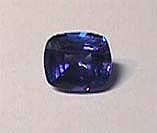
Tanzanite
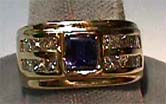
Consumer Information
What color is it?: Tanzanite will be a combination of equal colors of blue and purple. Some lesser quality stones will only offer a dominate blue color. These are less valuable than the stones that offer a true tanzanite color combination of blue/purple. The intensity of these colors can vary due to light source under which it is viewed. There is also a reddish color that is the third color of tanzanite that your eye cannot see. We will discuss this in a later section.
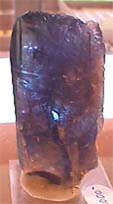
What is the story behind this gemstone?: Tanzanite is a very rare stone not only for its color, but also because there is only one place in the world where tanzanite is commercially mined. That is, of course, Tanzania. So not only is it rare gemologically, its also rare geographically. And when the region that is producing these rare stones is mined out, there may not be any more tanzanite available. It should also be noted that the stone has only been on the market for about 30 years. So there will not be a lot of estate jewelry with tanzanite in case someone is making that claim.
Can I wear it everyday?: Basically yes with some exceptions. With a hardness of about 7 it can be a bit brittle. So for normal everyday wear it is fine. But once again, any heavy banging around or framing houses should be done without wearing your tanzanite.
Is it expensive?: Prices have gone up over that past few years and will most likely continue to do so. A good quality tanzanite in the 3-5 carat range can cost upwards of US$1,000.00 per carat. So if you are thinking of buying a tanzanite…now would be a good time.
Is it a birthstone?: No.
What do I need to know before going shopping?: Stay with a well trained, independent professional jeweler. There are not any synthetic tanzanites on the market. But there are many imitations that have been developed in an effort to fool people. So stay with a professional, independent jeweler who will be able to properly identify these stones for your purchase.
Special Word on Tanzanite Appraisals: Tanzanites in the larger sizes (2 carats and higher) are quite rare and can be very expensive. And appraising a fine tanzanite in a larger size requires someone who is experienced in the current tanzanite market, and someone who is well experienced in the grading of tanzanite quality. Few retail jewelers handle enough tanzanites in the course of a year to be well enough experienced to be able to properly grade and value a tanzanite. In fact, few independent appraisers actually handle enough tanzanites to be able to provide an experienced evaluation. If you are shopping in a store that handles a lot of tanzanites, meaning they have a large selection and deal in a lot of tanzanite jewelry, YourGemologist recommends that you use your Bill of Sale or receipt for your insurance coverage. Make sure that you have all of the information for the items such as, measurements of stone, carat weight of stone, and identification of stone. Few jewelers and/or appraisers are qualified to offer appraisals of tanzanite purchases made elsewhere. So shop with an independent retail jeweler who makes tanzanites a major business within their store. This is your best bet that you are getting the most up-to-date information regarding tanzanite values. Local retail jewelers and appraisers who get tanzanite prices out of a book, and/or who do not sell a large volume of tanzanites in their stores, will not be a good source for tanzanite appraisals.
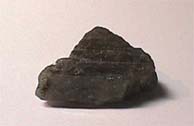
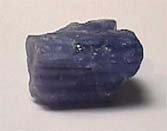
General Information
Rough tanzanite before and after heat treatment
Source: Tanzania only commercially viable source
Chemical: Ca2(Al.OH)Al2(SiO4)
Formation: Forms most often in granitic intrusions
Crystal System: Orthorhombic
Unusual Properties: Strong Trichroism with two of the colors, blue and purple, being readily visible to the unaided eye. A Chelsea Filter will view the third reddish brown color.
Treatment: Tanzanite is a brownish color (much like the third trichroic color) when it comes out of the ground. As shown in the two photos above the material turns to its blue/purple color after heating.

